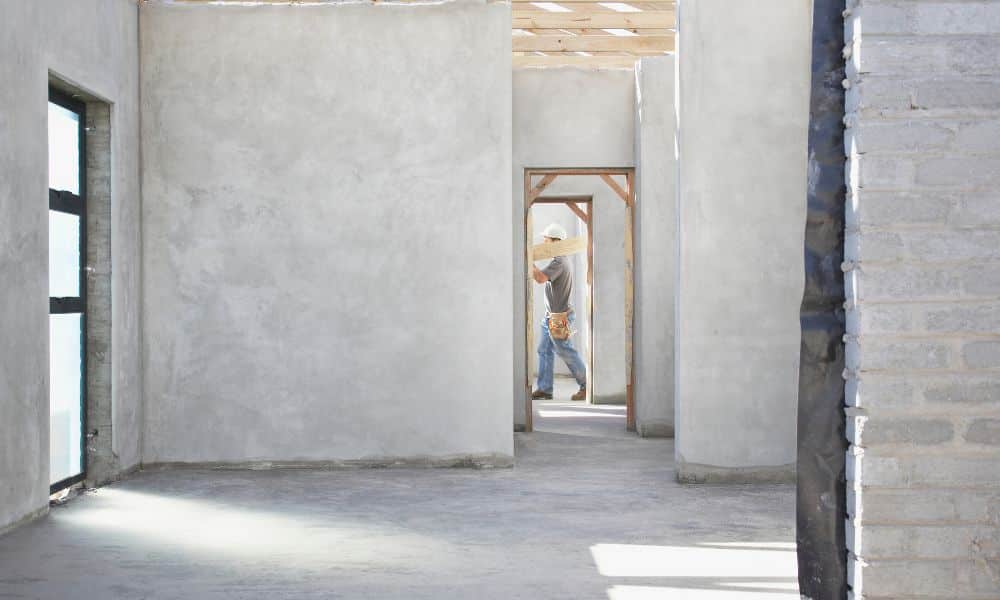In construction, “Base Build” refers to the works done to provide the basic elements by the developer of the commercial building.
Once the building is let to tenants the developer may undertake the tenancy fit-outs, or the tenant may take on that responsibility.
The ‘base build’ typically includes the primary structure, the building envelope (roof, façade, etc), and the mechanical and supply systems for the building: power, HVAC, water, drainage, gas etc (but excluding tenant spaces).

Lighting Control and Emergency Systems
Base build lighting control and emergency systems will usually include all common areas such as building entry, car parking floors, lift lobbies, stairwells, service areas and fire egress areas.
In many cases, the developer is not necessarily building with an end client in mind, and more often than not, the luminaires and the lighting control for the base build are chosen with the budget in mind i.e. which is the cheapest quote?
The end result is a system that functions but doesn’t actually deliver to the end clients’ needs.
Unfortunately, even when preferred lighting products and control systems are specified, those specifications are often broken in favour of a lower-cost solution. Although these cost-savings work on paper, two years on when lights and systems start to fail, that ‘lower-cost solution’ incurs considerable expense.
Commonly warranties offered by the luminaire or controls supplier cannot be claimed as paperwork and contact information has not been retained. The building owner was not involved in the purchasing of the lights or the controls and may have no documentation to prove manufacturing dates, etc.
Without a doubt this information should be marked on a luminaire, and a reputable manufacturer will support warranty claims, but we are all aware not every product (particularly when purchased on price) comes with the manufacturer’s support.
Building for Sustainability
For developers who are genuinely committed to reducing New Zealand’s carbon footprint, it has become essential to source the right products that deliver on their green credentials in providing a base build that has true sustainability. No longer can it be acceptable to chuck in products or systems for short-term functionality, that will end up in landfill just a few years later.
We have been in the business of supplying and commissioning lighting control systems for more than fifteen years. We are certainly not naïve and realise that “budget” will always be a factor in the purchasing decision.
However, when it comes to deciding on a base build lighting control system surely it makes sense to decide on a system that yes, may fit with budgetary restraints, but will also be a solution that can evolve with the changing needs of the building and its tenants over time.
DALI-2 for low-cost now, expansion later!
It is perfectly possible to install a low-cost DALI lighting control system that complies with the AU/NZ lighting control standard in all respects, but although initially provides only basic functionality, has the potential to expand and adapt to meet any and all future requirements.
This solution won’t require the often restrictive backbone (and expensive maintenance) of a legacy system, but can offer the flexibility of DALI-2 (wired), and DALI+ (wireless) technology with the assurance of third-party tested and certified products.
The low-cost ‘base build’ DALI lighting and emergency system can then be expanded simply and economically to include tenancy fit-outs once the building has been let. Those tenant fitouts may be equally low-cost and simple, or could include all the requirements of a fully smart building with remote system monitoring and reporting, user-friendly dashboards displaying building analytics, and much, much more.
Such a system will also help with the types of warranty claim mentioned earlier as information can be provided not just on energy usage, but even on the performance and power use by an individual driver. The data can show ‘actual’ lamp life, to compare with the manufacturer’s warranty, and to assist with future buying decisions.
The 2-way communication of the DALI-2 and/or DALI+ system allows feedback from sensors and switches to illustrate how the system is operating at any point in time. It can highlight potential points of failure and performance metrics invaluable for servicing and maintenance.
An incorporated DALI-2 emergency system can provide details on the status of connected batteries and EM luminaires, and record EM hours run.
Sustainability versus Budget (you can have both!)
When it comes to “base build” requirements, we know current specification and tendering processes will not change overnight. However if the right approach is taken, and with goodwill from all parties, surely real change is achievable to ensure that a truly more sustainable building is delivered.
For a base build lighting control solution, the infrastructure needs to be one that can both evolve as needs change, and be built upon to add functionality. It is irresponsible to build in waste when you can build in future opportunities, yet still, meet budget!
An open protocol as offered by DALI-2, and complying with New Zealand’s lighting control standard is a certain means to scale the project to suit construction budgets now, but provide a true ‘base’ on which to ‘build’ when budget allows.
For full compliance with the NZ standard for lighting control a lighting control system (LCS) should support all parts of the DALI-2 standard. Read more about how to ensure this is what is specified.


